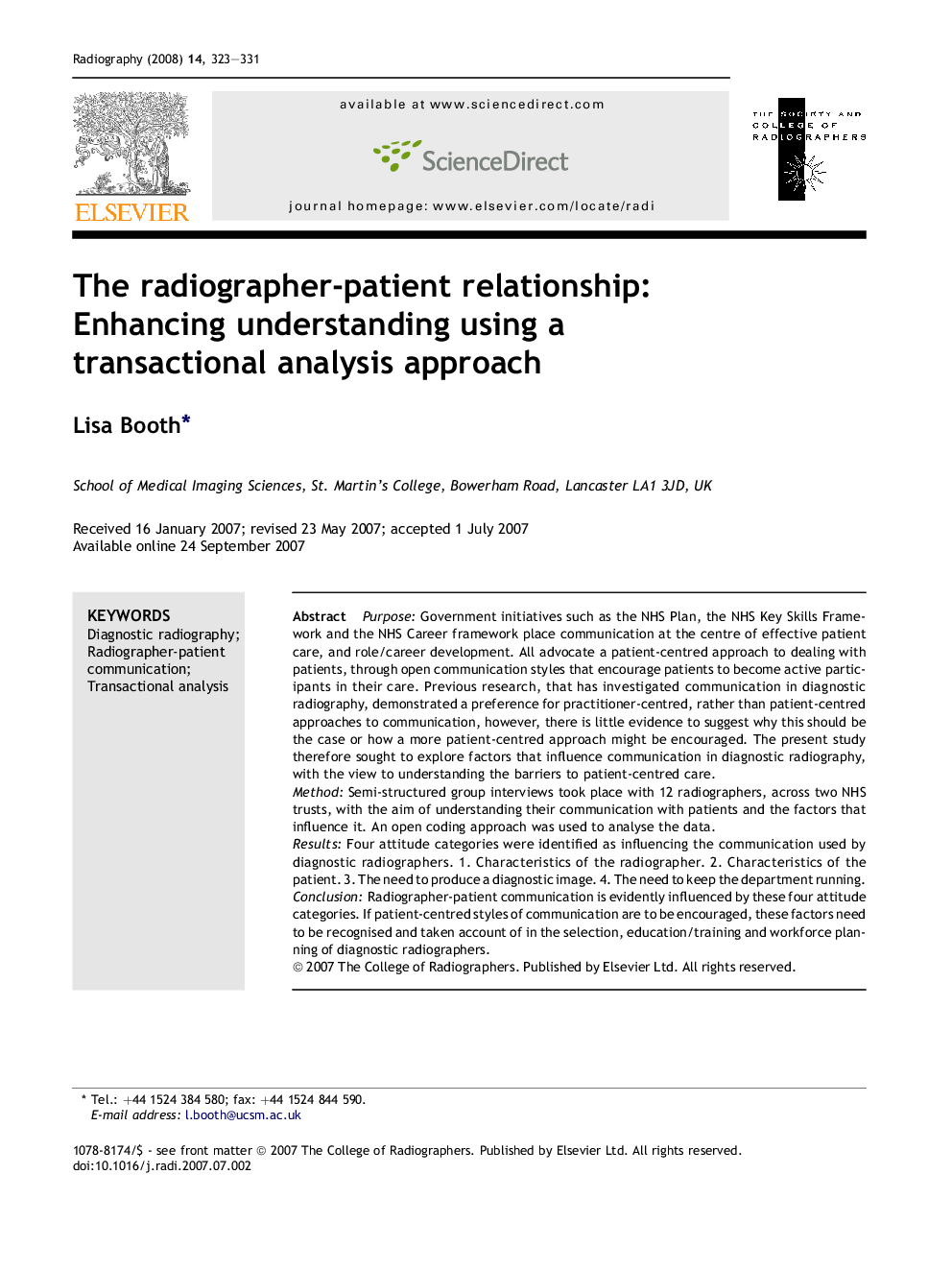| Article ID | Journal | Published Year | Pages | File Type |
|---|---|---|---|---|
| 2737570 | Radiography | 2008 | 9 Pages |
PurposeGovernment initiatives such as the NHS Plan, the NHS Key Skills Framework and the NHS Career framework place communication at the centre of effective patient care, and role/career development. All advocate a patient-centred approach to dealing with patients, through open communication styles that encourage patients to become active participants in their care. Previous research, that has investigated communication in diagnostic radiography, demonstrated a preference for practitioner-centred, rather than patient-centred approaches to communication, however, there is little evidence to suggest why this should be the case or how a more patient-centred approach might be encouraged. The present study therefore sought to explore factors that influence communication in diagnostic radiography, with the view to understanding the barriers to patient-centred care.MethodSemi-structured group interviews took place with 12 radiographers, across two NHS trusts, with the aim of understanding their communication with patients and the factors that influence it. An open coding approach was used to analyse the data.ResultsFour attitude categories were identified as influencing the communication used by diagnostic radiographers. 1. Characteristics of the radiographer. 2. Characteristics of the patient. 3. The need to produce a diagnostic image. 4. The need to keep the department running.ConclusionRadiographer-patient communication is evidently influenced by these four attitude categories. If patient-centred styles of communication are to be encouraged, these factors need to be recognised and taken account of in the selection, education/training and workforce planning of diagnostic radiographers.
